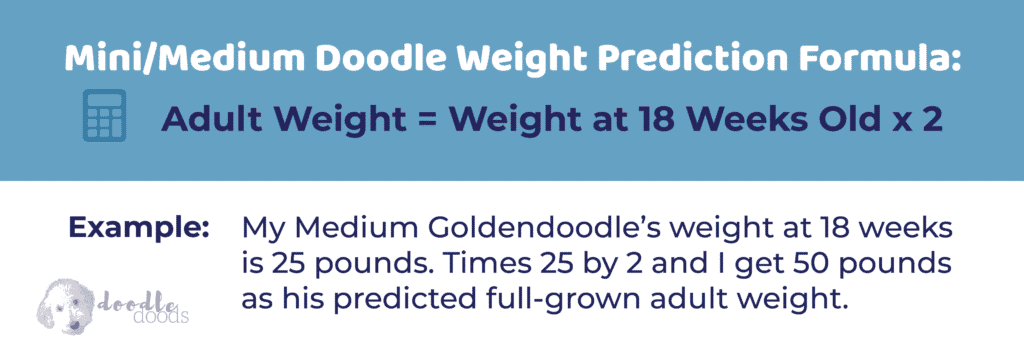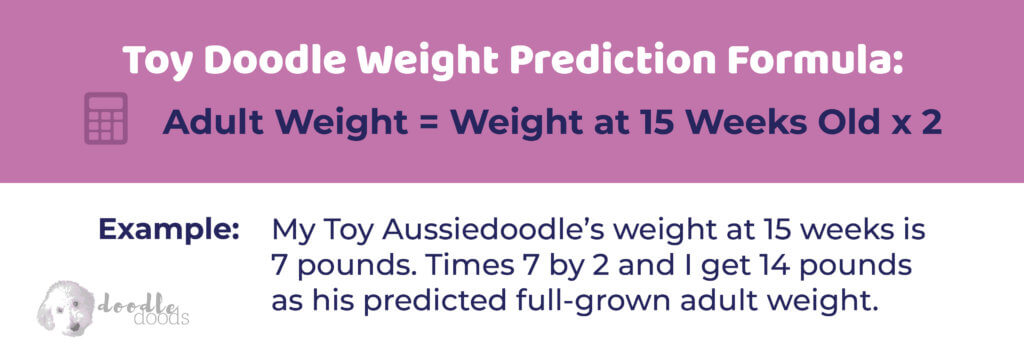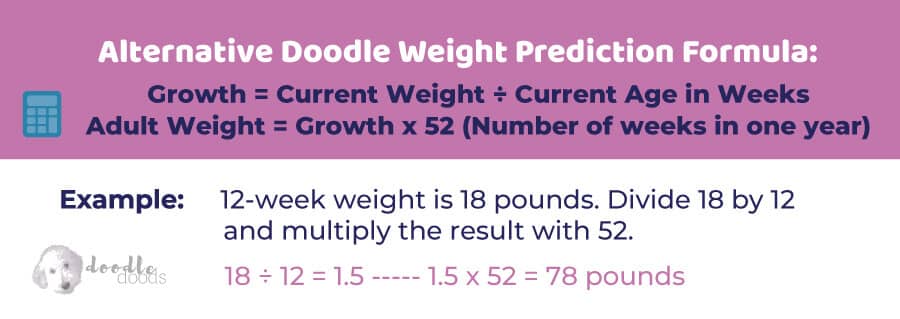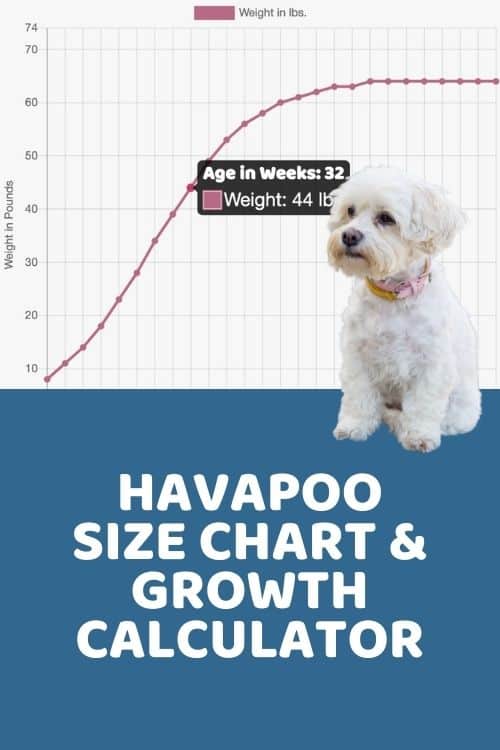In this article, we’ll be discussing everything about Havapoo size and growth patterns. We’ll also be sharing with you our best kept secret for trying to predict your Havapoo’s full-grown size. Let’s get started!
Also known as Poovaneses, Havadoodles, Havanoodles, and Island Mini Doodles, Havapoos are affectionate and intelligent dogs. These adorable Havanese-Poodle mixes are also incredibly versatile. They adapt well to most environments, making them the perfect match for many types of family setup. They do just as well in apartments as in large, sprawling houses.
Excellent companion dogs, and perfect for novice owners, Havapoos, despite inheriting Poodle traits from each side of the equation, are no working dogs. They love nothing more than cuddling up on the couch with their family after a nice leisurely walk in the park. If this sounds like exactly the dog for you, your only concern may be just how big Havapoos get. Here we will address that question.
The Different Types of Havapoo
Bright, lively, and affectionate, Havapoos are generally much calmer and gentler than other Doodles. This makes them great around even younger kids. Best of all, unlike many other smaller dogs, they aren’t at all yappy. In fact, they do much better with cuddling than guarding and get on as well with strangers as they do with other dogs – they are super friendly!
Due to the Havanese’ diminutive size, they are only bred with the smaller Poodles meaning that there are just two sizes of Havapoos: Mini and Toy. Both have pretty modest exercise requirements making them great for individuals who don’t have time to hike miles each day. However, the issue with this is that these dogs have a lot of potential for weight gain if their diet isn’t closely monitored.
Havapoos, while not one of the most well-known of the Doodles, have been around for long enough to have standardized types and sizes. These are the different generations of Havapoo and the breakdown in terms of their inherited genes:
| 1st Parent | 2nd Parent | % Havanese* | % Poodle* | |
| F1 Havapoo (first-generation) | Havanese | Poodle | 50% | 50% |
| F1B Havapoo (first-generation backcross) | F1 Havapoo | Poodle | 25% | 75% |
| F1BB Havapoo (first-generation backcross backcross) | F1B Havapoo | Poodle | 12.5% | 87.5% |
| F2 Havapoo (second-generation) | F1 Havapoo | F1 Havapoo | 50% | 50% |
| F2B Havapoo (second-generation backcross) | F1 Havapoo | F1B Havapoo | 37.5% | 62.5% |
| F2B Havapoo (alternate cross) | F2 Havapoo | Poodle | 25% | 75% |
| F3 / Multigen Havapoo | F1B Havapoo or higher | F1B Havapoo or higher | Varies | Varies |

As mentioned above, Havapoos have Poodle genes on both sides as the Havanese is said to have Poodle ancestry. So, even the early generations of these dogs are pretty Poodle-y in appearance. They are also pretty much guaranteed to inherit that much-wanted low-shed hair.
Havapoo Size Predictions
The Havanese (8-12 inches and 7-13 pounds) sits right in between the Toy Poodle (up to 10 inches and 6-9 pounds) and the Miniature Poodle (10-15 inches and 10-20 pounds). With such slight size differences between the parent breeds, it’s relatively easy to predict the potential adult size of their offspring.
Toy Havapoos are typically a little bigger than a Toy Poodle but slightly smaller than a purebred Havanese. Minis are a mite larger and tend to be more in line with the Havenese or slightly bigger depending on the specific sizes of the parents. Larger dogs, though, naturally give birth to heftier puppies, so checking the sizes of both parents is important.
Here are the specifics:
| Mini Havapoo | Toy Havapoo | |
| Weight | 15-30 lbs | 7-15 lbs |
| Height* | 12-15 inches | Up to 12 inches |
| Age at Adult Size | 8 months | 6 months |
Havanese are never paired with Standard Poodles due to the health risks involved in breeding such pups with such significant size differences.
Generational breeding might be used to reduce Doodle sizes because of the extreme popularity of smaller dogs. However, this is done when the non-Poodle is the larger dog and can be back bred with progressively more miniature Poodles or other Doodles. This is all done gradually to protect the health of the mother and her puppies.
Mini Havapoos
Miniature Havapoos often reach half their total weight around 3 months and their adult weight at 8 months.
For Mini Havapoos, here’s a simple formula you can use to predict your puppy’s adult weight:

Toy Havapoos
Toy Havapoos often reach half their total weight around 2 months and their adult weight at 6 months.
For Toy Havapoos, here’s a simple formula you can use to predict your puppy’s adult weight:

A different formula you could use for any size Havapoo is:

At What Age Are Havapoos Considered Fully Grown?
Havapoos reach their adult size somewhere between 6 and 8 months on average. However, it is possible for these dogs to continue increasing in weight (although not usually height) right up to their first birthday. Havapoos reach their adult height quite a bit before their final weight. Smaller dogs may even already be all the way there when you adopt them.
As with all canines, the larger their final size, the longer they take to get there. Check with the breeders what size their parents were and keep gender in mind. Depending on the amount of exercise they are receiving, muscle mass may be a factor here. Although, these dogs aren’t known for being particularly brawny.
How Big is a Full-Grown Havapoo?
A mature Havapoo will be somewhere around 8 to 15 inches in height. They will weigh between 7 to 30 pounds. The exact numbers will depend on the breeding Poodle and the size of their parents. Make sure to get as many details as you can from the breeder.
Males will almost always be slightly larger than females (perhaps a 10% difference in weight). However, the difference isn’t always particularly noticeable with such small dogs.
You can track your pup’s growth with our handy Doodle puppy weight calculator.
If you’re looking for a smaller Doodle companion dog for you and your family, the Havapoo will likely work well for you. These little dogs have all the cheeky nature of a larger dog in one tiny, beautiful package. While there are two kinds of Havapoo, there isn’t really all that significant a difference between the two. Both do well in a smaller space and don’t need quite as much exercise as other Doods do.
Suppose you have already adopted one of these darling dogs. In that case, hopefully, the information provided here will help you better understand how much they might grow. You can also see by what age they will have achieved their adult height and weight. Having this information to hand helps you be better prepared to take care of your pup and keep them both happy and healthy as they grow.
Learn How to Care for Your Doodle Puppy!

Perfect for first-time Doodle parents, get ALL your questions answered, including questions new Doodle parents don’t even think to ask.
Plus, get $700 worth of Bonus Materials for FREE, including:- Doodle Parenthood Community and Support Group ($190 value)
- Doodle Puppy Growth Tracker ($20 value)
- EMERGENCY Cheatsheet: When To Call The Vet Immediately ($50 value)
- HELP! Button ($145 value)
- And SO MUCH MORE!
The information on this page is for informational purposes only. It is not intended to be a substitute for qualified professional veterinary advice, diagnosis, or treatment. Always seek the advice of your veterinarian or other qualified animal health provider with any questions you may have.

